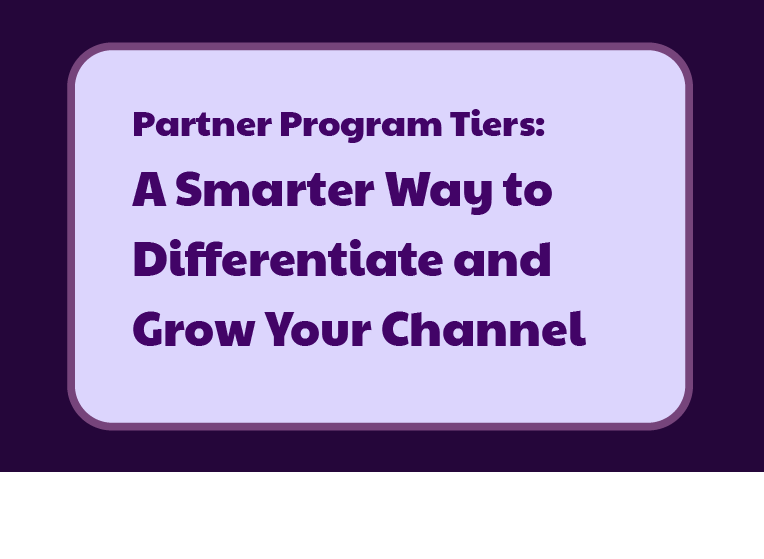- True enterprise fit (unlike most other PRMs)
- Deep CRM integration (Salesforce & Microsoft Dynamics): Data mirroring vs. error-prone field-mapping
- Scalability & extensibility
- Integrations capabilities: 3 ways to integrate
- 100% no-code administration
- Data security & compliance
- Performance & scale
- Partner segmentation & experience customization
- Global enterprise capabilities
- Future-proof your channel operations and partner management with a PRM that was made for exactly that
- We offer solutions consulting to help you figure out how to manage your partner operations on a PRM
What Do Enterprise Buyers Usually Look For in a Partner Portal (PRM) to Manage and Grow Their Partner Operations?
Enterprise PRM buyers prioritize CRM mirroring integration, extensibility, and various levels of customizability to scale partner ops – key factors to evaluate in your search.

Table of Contents 📋
November 3, 2025
Partner ManagementTable of Contents 📋
After analyzing the data (speaking to customers, and analyzing the needs of prospects who come to us), what I've consistently noticed is: organizations with mature partner programs (which are usually found at enterprises and upper mid-market) require a platform that's capable of actually scaling with their partner program management needs – not the buzzword kind of scaling, but actual, real scalability.
The most important capabilities they require are:
- Integrating deeply with CRMs: Mirroring data & schema
- Deep extensibility for directly integrating into external systems (via IDE) and capability for integrations into Magentrix (via REST API).
- Providing deep customizability to build a partner operations solution that's custom to their unique, and often complex, requirements.
As it happens, at Magentrix, these are the exact value propositions we can deliver on – and they're unique value props – meaning, we deliver on it in a way other PRMs can't because they simply don't have the capability to do so – no matter how many buzzwords they abuse 🙃 (Sidenote to PRM buyers: A lot of them will tell you they can do the same things as us, but that's because they don't understand how we do it. So a competitor may come across our marketing materials, and they'll be like "Self-serve PRMs? 5 mins to integrate with an enterprise Salesforce environment? Wow, that sounds amazing – Bob, let's put that on our website right away!"
The reality is, we've defined those terms to have a specific meaning that's only relevant to us, so they can't actually copy us – at least, not if they want to ensure they look like they know what they're doing and keep their reputation in tact. Yet, they still do. And we can't stop them. But what I can do is expose the truth so that you, the buyer, can assess things accurately for yourself. )
Let's get back to what enterprises look for in a PRM, and how Magentrix meets that criteria:
Enterprises with complex partner ecosystems – spanning multiple geographies, tiers, and business units – choose Magentrix because it adapts to their unique, mature program structures rather than forcing them into rigid templates. This is something SaaS-based PRMs can’t accommodate as deeply as a PaaS-based PRM like Magentrix can.
Magentrix’s mirroring integration doesn’t use simple field-mapping like all other PRMs do. It mirrors both data and schema – ensuring the CRM remains the single source of truth (unlike other PRMs who claim this but can’t deliver on it due to the limitations of their field-mapping approach)
- For upper mid-market and enterprises with complex CRMs – that often have millions of records and complex hierarchies – mirroring the data & schema eliminates:
- the high-maintenance burden of manual mappings,
- reduces sync errors
- and eliminates data silos.
- And, as they have frequent data/schema changes – in field-mapping models, these changes often cause the integration to break (i.e. sync errors or other) and require constant IT work.
- Magentrix avoids this by automatically staying aligned with CRM data & schema and preserving data & schema during transfer, ensuring updates are accurate and consistent.
The result is a unified, accurate, very low-maintenance channel data foundation that scales reliably with the enterprise’s CRM – even as schemas evolve, custom objects or new workflows are added.
To learn more about this, or read The CRM-to-PRM Integration Guide for the Unsuspecting Partner Portal (PRM) Buyer. Or watch this explainer video by the chief architect behind the mirroring integrations:
Magentrix provides 100% no-code, out-of-the-box PRM and partner portal features but for those who want to customize these features (beyond our OOTB customization options), or who want to build completely custom workflows unique to their own partner operations and how they manage partners – or who want to customize the partner experience –they have the power to do so with Magentrix.
Delivered as a PaaS – a platform as a service – Magentrix provides a developer IDE for IT teams. (This is something no other PRM but SF Experience Cloud/Partner Cloud offers.)
- The IDE is what allows enterprises to have the extensibility needed for deep integrations and custom logic.
- PaaS also enables enterprises to build custom modules, workflows, and partner experiences that are unique to their business requirements – this is key for managing enterprise partner operations.
Aside from existing built integrations in Magentrix, Magentrix has 3 ways to integrate (with other systems or with Magentrix):
- 1) The platform's IDE allows extensibility into any other application you might want to integrate to (e.g. ERP, BI, other tech you use for managing your partnerships, etc.) – anything that we don't have an integration for, can be achieved via the IDE.
- Why does this matter – and what does it make possible that other PRMs don't? It allows you to truly use your PRM as the one central platform for your partner operations by allowing you to bring whatever you need from your other tech, into the PRM and extend it to partners if you'd like.
- 2) API Support: Allows other applications to integrate into Magentrix, and vice versa.
- Unlike the other PRMs, we offer the option for you to connect to other applications via their API.
- 98% API support for everything: Allows other applications to integrate into Magentrix. Read more about our REST API here.
- 3) iPaaS integrations: via Make or Zapier.
- For lighter-weight, and development-free needs you may have in terms of connecting to another application, we also offer integrations with two of the most popular iPaaSes – Zapier and Make.com
- These iPaaSes allow you to connect Magentrix to thousands of other SaaS apps without needing custom development. Whatever we make available in our Zapier connector (records, triggers, and actions) can be stitched into workflows across tools your partners or internal teams already use.
- While this is not always the primary way enterprises will integrate to other apps, it's still worth noting that we have the option – as other PRMs we often get compared to don't offer it.
Magentrix is 100% no-code configurable. Business users (non-technical people) can update workflows, create portal pages, and manage content without relying on IT or developers. For enterprises, this reduces backlog on internal technical teams and enables partner programs to adapt quickly to changes without development cycles.
Magentrix supports enterprise-grade security requirements, including
- SSO
- field-level security
- role hierarchies,
- ISO 27001
- and compliance-ready audit trails, aligning with global security and regulatory standards.
Built to handle large volumes of CRM data, Magentrix supports millions of records, complex hierarchies, and high concurrency across global partner ecosystems without performance degradation.
Magentrix provides:
- Granular role-based segmentation,
- Content targeting (permissions),
- The ability to create custom micro sites for select partners
- and more.
All this allows large organizations to deliver tailored partner experiences at scale. Additionally, the IDE allows customers to build as customized of a partner experience as they want.
- Multi-language,
- multi-currency support,
- role-based access controls,
- SSO,
- and a REST API to build robust integrations
–– all align Magentrix with the operational demands of global enterprises managing diverse partner ecosystems.
Without these capabilities, it would be difficult for any growing partner program to scale and manage their partner operations and stay future-proof.
Building your channel operations on the Magentrix platform ensures you don't have to make a migration down the road (while other PRM vendors say this, that's all they do – they just say it – they don't back it up with clear information and proof behind how they enable you to scale and be future-ready. Whereas we're transparent about the capabilities we have to empower you to scale on our platform for any future partner management needs).
Ask us for a PRM solutions consulting session to learn more. (please be sure to include a note in our form to indicate this is what you're looking for.)
FAQs about
No items found.





